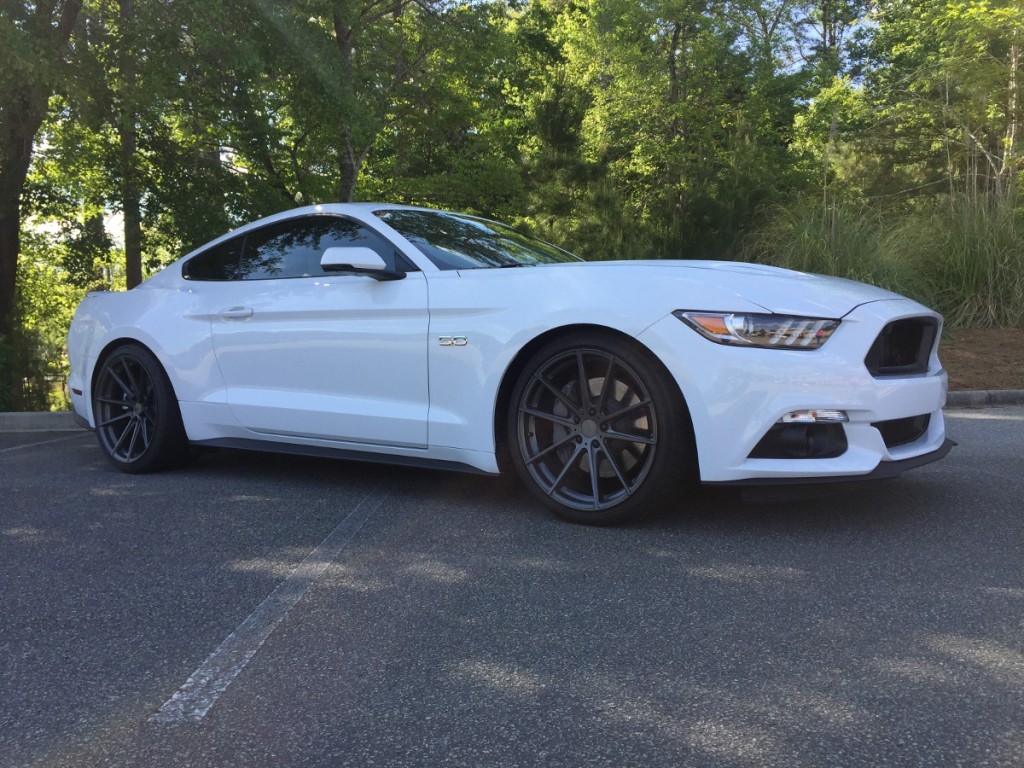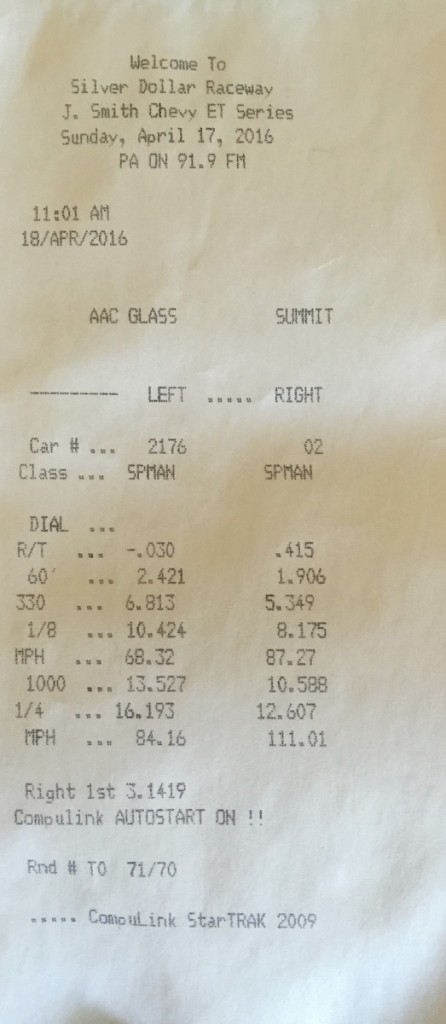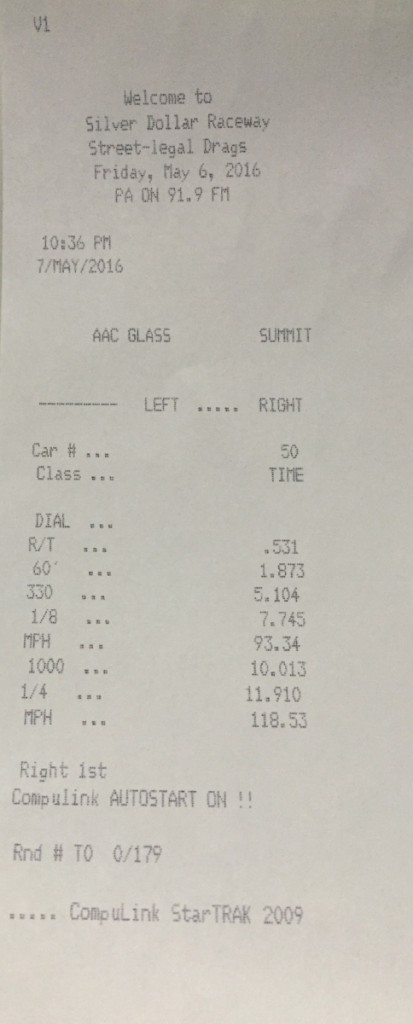Bolt-On 11s
Words And Photos: Richard Holdener
If you are a Mustang guy (or gal), this is a great time to be alive. Blue-Oval performance is alive and well, and there is no denying the latest generation of 5.0L Mustangs is the baddest of the bunch. Carrying on the proud tradition of the Trans-Am winning Boss 302s and fabulous Fox fuelie motors, the current Coyote represents an evolutionary step to the power of four. Two valves replaced by four, one cam replaced by four, and power outputs in the 200 to 300 hp range, also replaced by four (hundred, that is!).
Look back through the history books and see how many Mustangs rolled right off the showroom floor and ran 12s at over 110 mph! Yes, fellow Ford fanatics, the new Coyote is the real deal. But the problem with enthusiasts is that, no matter how good it is, it is never quite good enough. Running 12s is all well and good, but the first question about any 12-second car should always be, how do we get it to run 11s?
Truth be told, getting a stock 2015-16 Coyote Mustang into the 11s is as easy as bolting on a power adder (any power adder). Toss on a ZEX Nitrous kit, Kenne Bell supercharger, or boost from a turbo and you have an easy 11-second car, possibly a high 10.

Obviously, part of the success of the project goes to the amazing Mustang GT. Even in stock trim, this 5.0L Ford offered serious power and despite a hefty curb weight, knocked down some impressive ETs and trap speeds right off the showroom floor.
Yes, power adders make it look easy, but far be it from us to actually take that route. Rather than go boost or juice, we decided all-motor was best for our Coyote. Taking things one step further, we decided to stick with your most basic bolt-ons, including tuning, exhaust and air intakes, thus leaving the big-boy, bolt-ons like ported heads, COMP Cams and Cobra Jet intakes for Part 2. Rather than go whole hog and install everything at once, we took our time and installed and tested the components on the dyno individually.
Limited track testing meant we could not run the components individually at the strip, but know there was a definite correlation between the power gains and trap speed (and drop in ET). The testing performed was obviously on the performance components, but know that success was not possible without Brian Anderson of Anderfab Racing, the Dyno Dynamics chassis dyno and, of course, the endless hours Jimmy Hittle spent tuning and testing.
The first step in any test was to establish a baseline. Having power numbers would help us correlate the change in ET and trap speed. Run in stock trim, the 2016 GT produced peak numbers of 345 hp and 341 lb-ft of torque. The Dyno Dynamics software included a Dynojet conversion, which put the stock power output at 385 hp and 379 lb-ft of torque.

Having run the Mustang on the chassis dyno in stock trim, the car was then taken to a local drag strip to make some passes. Run in full stock trim with street tires, the Mustang knocked out a string of 12.60 passes, with the best being a 12.607 at 111.01 mph. The air was very good (63 degree and DA of only 448 ft), so this was a best-case scenario for the stock GT.
After the dyno session, the Mustang was taken to a local track where it ran a best of 12.607 at 111.01 mph. The times were impressive for a stock Stang, but the 63-degree air and density altitude of just 448 feet produced near-ideal conditions.
Having established our baselines, Jimmy tore into the factory programming using HP Tuners. Rather than load up one of the available (shelf) tunes, he spent hours making adjustments to ignition timing, air/fuel, and cam timing and was eventually rewarded an extra 12 hp.
One thing Jimmy noticed while tuning (especially at the track) was the ECU kept the Coyote on the verge of detonation. By maximizing timing, the factory ECU relied heavily on the knock sensors to detect problems and relay the signal to the ECU. The result was always a reduction in ignition timing, which in turn reduced power (even running on 93-octane fuel). The cure was to install a Snow water/methanol injection system. The result of the installation and tuning of the Snow system was not only increased but consistent power. The injection system eliminated any trace of detonation (no knock counts) and significantly reduced the inlet air temperature.
After adding some Snow, we turned our attention to the exhaust. Hooker stepped up in a big way with their BlackHeart exhaust system for the Coyote. The system featured high-quality stainless construction, bolted right on, and even dropped almost 50 pounds off the curb weight. When it comes to acceleration, less weight is the same as more power. Speaking of power, the combination of long-tube, BlackHeart headers, cat-back and x pipe produced impressive results. Swapping out the exhaust resulted in extra 41 hp and 46 lb-ft of torque. The BlackHeart exhaust offered the biggest power gain of any of our bolt-ons!

After dialing in the combination of parts, Jimmy was eventually rewarded with back-to-back 11s, as the Coyote nailed an 11.91 at 118.53 mph. It is obvious the trap speed indicated the motor was making plenty of power, but our focus for Part 2 will also include knocking down the 60-foot time using a high-stall converter. After that, look for COMP Cams, ported heads, and a Cobra Jet intake. Is it possible to run 10s on the motor? We’ll find out.
Happy with the newfound power (and aggressive sound quality) offered by the BlackHeart exhaust, it was time for some alcohol. No not in celebration, but we did treat the Mustang to some E85. The cooling properties of E85 help a motor make more power, and that is exactly what happened. Switching over to E85 (again with the requisite tuning) resulted in another slight jump in power, but every little bit helps.
Looking to improve the 60-foot times, we also installed a set of Mickey Thompson drag radials. The 305/35R20 ET Streets offered improved traction, but the ultra-low stall speed of the factory converter kept us from taking full advantage of what the MTs really had to offer. Trips to the track showed serious improvements, but the best run thus far had been a 12.109 at 116 mph (60-foots in the high 1.8s).
What finally pushed us into the 11s was the installation of the JLT air intake system. Despite a warmer ambient temperature (76 degrees) and higher density altitude (1514 ft) than the baseline runs, the ACME All-Motor Coyote ripped off a couple of 11.90s, the best being n 11.91 at 118.53 mph.
Our 12-second Mustang was now officially an 11-second Mustang, but you know what we were thinking. Is it possible to go 10s with bolt-ons and no power adders?
Sources
Snow
snowperformance.net
COMP Cams
compcams.com
Mickey Thompson
mickeythompsontires.com
HP Tuners
hptuners.com
Holley/Hooker
holley.com
Anderfab Racing
[email protected]
Dyno Dynamics
dyno.com.au
















